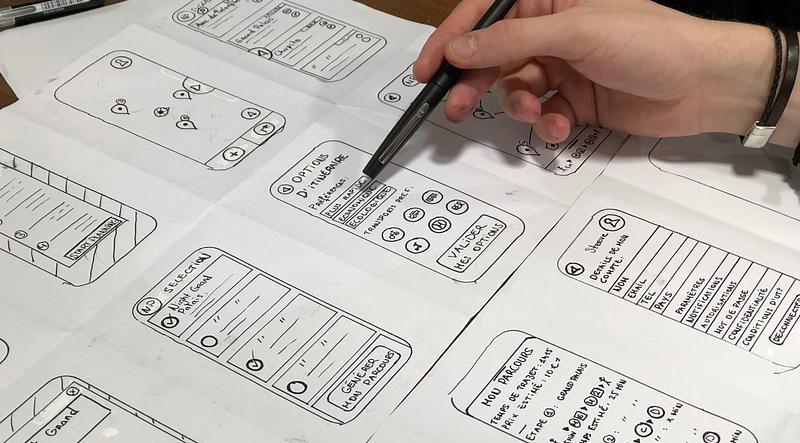Sketchbooking Within the Design Process
17 January 2020 - Mark Haley

Designers are spoilt for choice with all the tools available at the moment. It’s so easy to digitise our process from start to finish that we often forget about our old friend, the sketchbook! We are going to discuss some of the key reasons why using a sketchbook through a project can really boost creativity and help you focus on what is most valuable at different stages in the design process.
Concept generation and prototyping
The main goal of sketching out your ideas is to get as many on the page as possible. The form these ideas take is not important at the very early stages of a project, they don’t have to be finalised or even logical as further developments on these will come later on in the design process.
When it comes to sketching out wireframes, it can really help to draw out the user paths or journeys to visualise how all your screens fit together and some key issues can be noticed and ironed out at an early stage.
Be ready to discard early ideas and embrace your errors
A sketchbook is an excellent place for a quick brain dump of all your ideas onto a page. If the same initial concepts were created on a UI tool like Sketch, or even drawn on an iPad, it can become far too easy to get caught up in colours and design decisions at an early stage. Sticking to paper for these tasks allows for all sketches, mistakes included, to remain on the page and influence later design decisions. Personally, we believe prefer to draw in pen to remove the temptation to rub out errors. If you erase mistakes or designs you think are poor you could be deleting some valuable information you might want to come back to at a later stage.
Keeping your creativity flowing
Sketching and drawing is a key practice that helps keep the creative juices flowing throughout sections of projects where you might not be directly involved with any design work. In the research and discovery phase of the design process, mapping out journey maps and storyboards in a more visual way can also help develop empathy with your users and get to the core of the problems you are trying to solve.
Drawing also helps ideas evolve by visualising it in more of a physical form rather than just text. This method can really help trigger other ideas from your initial concept, or possibly highlight an issue you didn’t previously think about, which is equally important.
Separating your initial ideas from your final designs
It’s important to acknowledge which stage of the design process you are at to help focus your effort and time into what is valuable at each stage. For example in the early wireframing stage of the design process the key focus may be information architecture, or layout. At a later stage when you are finalising a visual theme and brand you might be more focused on colour, typography or animation.
By using different tools at different stages in the project can really help create a clear divide and aid your focus onto what is more valuable rather than getting caught up in what colour palette you are using at the wireframing stage.
Final note
There is no doubt that the abundance of digital tools available is of huge value to a designers workflow, with each racing against each other to provide the best functionality available to users. However, we believe it’s also important to know when stepping away from the digital process will help your work and understanding what value keeping a trusty sketchbook can have.
You might also be interested in...
Apply User Requirements to know what success looks like
6 March 2019Without learning about your user needs and the requirements for your solution, its difficult to really know if you’re designing a successful product.
Read the article: Apply User Requirements to know what success looks likeThe UX Toolbox - Prototyping
29 August 2018Prototypes and wireframes are the best vehicles for the journey of user-centred design, to gather user feedback, evaluate your work and ensure you’re going the right way.
Read the article: The UX Toolbox - PrototypingWhat a wonderful WUD!
23 November 2017Two weeks have elapsed and I think the whole team has just about recovered from another, wonderful World Usability Day (WUD) event.
Read the article: What a wonderful WUD!